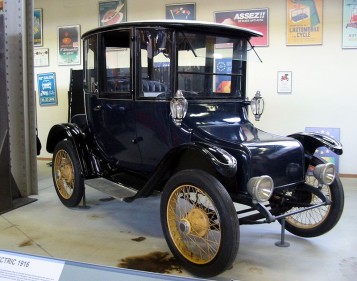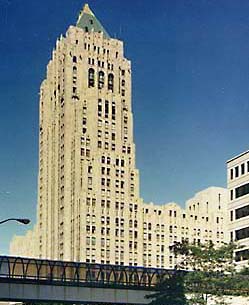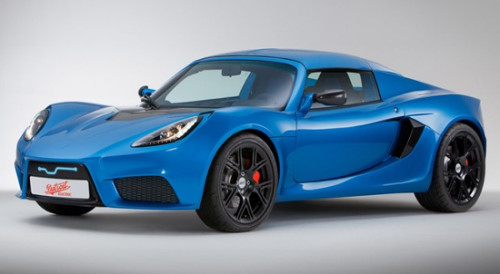Detroit Electric
“General Motors’ money-losing European unit, Opel, will halt sales of the Detroit-built Opel [or Vauxhall in the UK] Ampera because of disappointing results.”
“After the eventual run-out of the current generation of Ampera, we’ll introduce a successor product in the electric vehicle segment. Our next electric vehicles will be part of our massive product offensive – with 27 new vehicles in the 2014-2018 time frame.”
-Tweet from Opel CEO Karl-Thomas Neumann

(1916 Detroit Electric Car.)
I was going to write about people who put big engines in little cars this morning, and may still. Too early to tell.There are complications, though not of the order that confront the Grand Daddy of all car people, General Motors.
I am supposed to have lunch in Culpeper with another old Spook, and Admiral Marocchi’s interment is at the Culpeper National Cemetery at 1400. I was not a close friend, but I want to pay my respects to the former senior retired Naval Intelligence Flag officer and World War II hero, so I need to get my act together fairly early here in Arlington and get on the road.
It is a good Friday to take off even if it is Beef on Weck night at Willow.
Tracy O’Grady assured me she would hold one for me until Monday, and that is normally how long snacking on the monster sandwich takes anyway, so it is all OK. The weather is mild and dreamy. Great day to check out alternate venues in which to spend eternity.
I get periodic musings from Car People on the compliance auto industry, the one that followed the take-over and bail-out at Generous Motors. One astute pal sent a note this morning noting that that in addition to the billion dollars GM has set aside to compensate the families of the victims of the faulty ignition switches, there is going to be
This chapter in the history of American Cars and Car Companies has been entertaining, and I realize there really ought to be a rumination on the command economy and the role of central planning in determining social goals. Which has nothing whatsoever to do with what we want. I have no complaint about electrical cars. My Left Coast Attorney is an enthusiastic supporter of the Volt his son flogs around San Francisco, and in certain applications they are fine and dandy. I am pretty sure that I don’t want to pay for one at this point, either indirectly through my taxes, or directly at the dealer.
See, this has all been tried before, and they are trying again.
The Anderson Carriage Company built its first electric car in 1907 in the magical age of the Motor City, when the entrepreneur was king. They changed the name to reflect the vision in 1911 to become the Anderson Electric Car Company, eventually evolving (without government support) to become the Detroit Electric Car Company in 1920. The company declared bankruptcy in 1929 with the collapse of Wall Street and the beginning of the Great Depression, any odd echoes of New Deal central planning in the Obama Command Economy being purely coincidental.
A fellow named A.O. Dunk bought the company in receivership, and it survived his death in 1936, shipping its last car on February 23, 1939.
In all, the company built 90 different models over the course of its 32-year history. While the top speed of the car was just 20 mph, about the speed of a modern golf cart today, it had a reputed range of 80 miles on charge, and one car operating on experimental Edison batteries drove 211 miles.
The problem, as you note, is that no one wants to drive at 20mph. Certainly possible for some urban applications or fleet sales, but trying to glide down to the farm in an electric vehicle would mean the trip would require a recharge out in Haymarket, and the duration of the trip would change from an hour and fifteen minutes to something closer to five- or enough that I might rather opt to take the train, which is actually an option from the Depot in downtown Culpeper.
The Government Gravy Train is irresistible, as our Governor TMac has demonstrated, with his adroit manipulation of the Stimulus billions for electric car schemes in Alabama that never produced a working vehicle.
GM is not alone in its effort to comply with the edict to have “a million electric cars on the road.” Others have jumped on the free money from Uncle Sugar. The Detroit Electric brand was revived in 2008 by Albert Lam, former Group CEO of the Lotus Engineering Group and Executive Director of Lotus Cars of England, with a vision (hallucination?) to produce premium-quality pure electric vehicles “that seamlessly integrate refined aesthetics, innovative technology and superior handling and performance.”

(The Golden Tower of the Fisher Building retains its faded glory in the New City area of Detroit, near the former GM World HQ).
Detroit Electric was re-launched to the world on 19 March 2013, with the signing of its new headquarters in the Golden Tower of the Fisher Building in Detroit. I toured the formerly premier office structure in Detroit in 2010, which now rents office space to entrepreneurs who need a prestige address with a low overhead. The building is still magnificent, and the lavish treatment of the public spaces transports you to the entirely amazing city that was:

(Lobby of the Fisher building, where you can rent a share of a prestige office address for a song.)
They are demonstrating for water in the Motor City these days, which shows you a bit of the Ozymandus thing in the town of my birth.
Detroit Electric’s first product and sales were scheduled to begin in the United States in August 2013 at a price starting at US$135,000. Production was delayed because, as of August 2013, the company had not been able to secure an agreement for a manufacturing facility.

(The SP:01 is billed as a “mobile power source,” which can power your home in the event of a power outage. For a while. Then you will be stuck in a dead house with a dead car. Why don’t gas cars have the capability to provide electrical power out? That might actually be useful.)
The initial model is designated the “SP.01,” and according to the company will have a total weight of 2,354 lbs, propelled by a 150 kW (201 brake horse power) electric motor mounted behind the passenger cabin. Top speed is reported to be 155 mph with a zero-sixty ET of 3.7 seconds, the same as the Tesla Roadster. I am not aware of a real review of a real working model.
The battery is supposed to deliver a range of 180 miles, and it will only take 4.3 hours to charge with a special adapter, though the standard 13 amp power source will take 8 hours.
$135 grand? Shoot. For that amount of money, I could buy a perfectly restored Dodge Superbee, which will smoke any electric car, and they only take five minutes to fill up.
We will get back to big engines stuffed into little cars tomorrow, all of which operate on high test.
Copyright 2014 Vic Socotra
www.vicsocotra.com
Twitter: @jayare303
–
